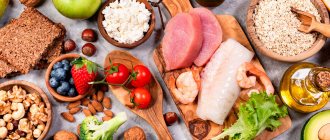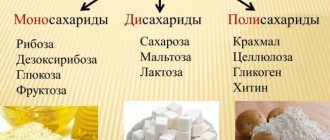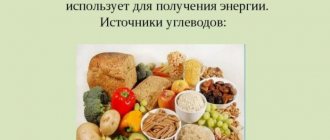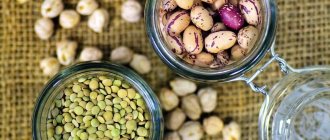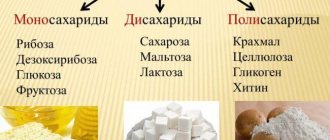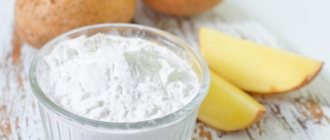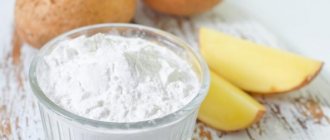Every person's diet should contain fats. Thanks to these substances, the body absorbs vitamins much more easily and tolerates hypothermia and damage much more easily. Fats are also a source of energy.
There are the following types of fats: saturated, unsaturated and trans fats, which are also called hydrogenated.
Trans fats contain trans isomers, or elements of unsaturated fatty acids. Consuming such substances in large quantities can harm the body. Exceeding the permissible daily allowance by just 2% increases the risk of developing cardiovascular diseases by 25%.
Trans fats are produced through hydrogenation. The essence of the process is that hydrogen is passed through vegetable oil heated from +200 to 1000°C. The process also uses a powder catalyst. As a result of this effect, some unsaturated fatty acids become saturated. The mass becomes solid and resistant to oxidation processes.
This process makes it possible to obtain fat mass for the production of margarine, soap, cooking, frying and confectionery fats. The main advantages of such substances are low cost and long shelf life.
Good quality solid fat has a high price and requires high production costs. Liquid fats of vegetable origin have low nutritional value and quickly become unusable. In order to make the production process quick and cheap, vegetable oils are hydrogenated.
Natural foods may also contain trans fats. This primarily applies to milk and meat fat. Such substances are formed in the body of animals, and differ in composition from artificial ones. Consumption of animal products in normal quantities does not cause harm to the human body.
What are trans fats
If you are used to eating processed foods and fast food, then your body receives mainly artificial trans fats.
- To obtain them, a chemical reaction is used, as a result of which broken pieces of unsaturated fatty acids are straightened, due to which the fat gains the ability to harden.
- This process is called hydrogenation. Why are they harmful? After all, food of animal origin also contains a small amount of trans fats (milk, beef).
In minimal quantities, trans fats do not pose a danger to the human body. But in the last 100 years we have increased the proportion of artificial trans fats in foods.
Industrial process for hydrogenation of trans fats
To obtain a cheaper product for use in cooking, an innovative technology for hydrogenating vegetable fats to produce trans fat was developed.
Vegetable oils were used for this technology:
- Refined sunflower oil;
- Palm oil;
- Coconut oil;
- Cotton oil;
- Soybean oil.
Hydrogenation of vegetable oils made it possible to transform their consistency from a liquid state into a fairly solid product.
This process is divided into several stages:
- Purification (refining) of vegetable oil from all kinds of impurities in it;
- Due to copper and nickel salts, fats are saturated with hydrogen atoms;
- After combining fatty acids with hydrogen atoms, the vegetable oil molecules harden and transgenic fat is obtained;
- There is also a dehydrogenation technique, when the process of detaching hydrogen atoms from fatty acid molecules occurs and a transition from the solid structure of trans fat to the liquid structure of oil occurs.
At the everyday level, a person does not need to know the process of producing trans fats, but every person who cares about their health and the health of their family should study the labels on them when purchasing products.
Over the past few decades, global consumer protection policies have required all food manufacturers to indicate on their food labels the presence of saturated fats and hydrogenated fats, which are hazardous to the human body.
European and American manufacturers strictly adhere to these rules, but manufacturers in Russia and countries from the post-Soviet space are not always conscientious in complying with all the requirements and laws of their state and the international community.
Hydrogenation of vegetable oils made it possible to transform their consistency from a liquid state into a fairly solid product
Why are trans fats actively used?
In order to make the production process inexpensive and extend the shelf life of products.
Food manufacturers at the beginning of the 20th century needed cheap analogues of animal fats and butter. Although vegetable oil was produced in considerable quantities, it could not replace them.
The introduction of the hydrogenation process to the industrial level made it possible to expand the production volumes and formulations of margarines. Over time, hydrogenated fats began to replace natural ones, adding them to many foods.
- After all, obtaining such fats does not require significant costs; they have a long shelf life.
- After hydrogenation, liquid oil becomes solid and acquires a texture similar to that of butter.
- Trans fats are used to prepare “meals” in fast food restaurants.
- This food additive was widespread until the 1990s, before articles appeared about its harmful effects on the human heart and blood vessels.
Numerous studies have been conducted on hydrogenated fats confirming that they do, in fact, have adverse effects on human health.
And now most food enterprises continue to use hydrogenated oils. This allows you to reduce production costs and improve the organoleptic qualities of food products.
Use in production
If hydrogenated oil is so dangerous to the human body, it should simply be banned from use in food production, but it is still used in the manufacture of many foods and dishes.
There are many reasons for using trans fat in cooking:
- Trans fats are good preservatives, so using them in food products extends their shelf life;
- Cheaper products due to the low cost of trans fat;
- Trans fats can be used more than once, for example, for deep-frying foods.
How to find out if food contains trans fats
According to current legislation, the manufacturing company must indicate the presence of trans fats in products.
Most products do not always list trans fats. They are hidden behind the following names:
- Hydrogenated oil;
- Cooking fats
- Partially hydrogenated fats;
The content of trans fats in food products can be suspected if they are present in:
- Combined fat;
- Margarine;
- Milk fat substitute;
- Spread;
- Dairy product;
- Vegetable cream;
Try to read the label before every purchase.
Why were fat substitutes invented?
Trans fats appeared in the post-war years against the backdrop of mass hunger and technological progress. Manufacturers immediately appreciated the benefits of the new food product. But the human body still does not know how to remove them and how to get rid of the damage caused by them.
Scientists were prompted to invent trans fat by three factors:
- Vegetable oils are healthier than “harmful” animal fats. The latter contain “bad” cholesterol, which causes obesity and heart disease.
- Unsaturated vegetable fats contain a number of essential acids - Omega-3 and Omega-6, which is why the oils are in demand among buyers.
- Natural vegetable oil has a short shelf life of 2–4 months. And to preserve the taste of the oil, store the food product in a dark room at a temperature of 20°C.
The pickiness of vegetable fats did not benefit producers. The price of the product rose, and competitiveness fell. Then scientists created an “improved” cheap analogue, not picky – trans fat. The new product can be stored at room temperature.
- We recommend reading about the role of fats in the human body
Trans fats are obtained by hydrogenation - passing hydrogen through heated vegetable oil and cooling. As a result, although the product originated from liquid vegetable oil, their structure is solid.
Why are trans fats harmful?
Trans fats are not part of a balanced diet and have a detrimental effect on human health.
Ideally, a person does not need to obtain trans fats from food at all.
But it will not be possible to actually achieve this figure. Therefore, an upper limit for the safe daily dose was set.
- It is permissible to consume 2-3 grams of trans fats per day.
- Constant intake of large amounts of trans fats from food can cause disruption of the functioning of almost all organs and systems of the body.
Trans fats: a dangerous dose for health
Scientific research suggests that harm to health and changes in human metabolism occur when trans fats are consumed in amounts of 2% of the total daily calorie intake. In terms of grams, this is equivalent to 3-4 g of transgenic fats per day - a tablespoon of baking margarine or a small serving of French fries.
A large serving of French fries can contain up to 10-12 g of trans fats, fried chicken with CFS - about 5-7 g, one donut - 5 g, a small packet of chips - 3 g, a serving of breakfast cereal - 2 g.
We recommend reading: Barbell row to the chin, which muscles work with a narrow grip
Why are trans fats dangerous?
In adults:
- Increase in excess body weight
- Provoking the occurrence of type 2 diabetes mellitus.
- Early onset of Alzheimer's disease
- Reduces the production of sex hormones in men
- Increase the risk of infertility in women
- Risk increases
- Decreased body resistance to stress.
In children:
- Decreased mental capacity
- As a result of consuming more trans fats during pregnancy, the baby may lose weight.
- Decreased resistance to infections
Harm
According to WHO recommendations, until 2009, the intake of trans fats should not exceed 2–3 g per day. Due to the fact that artificially created hydrogenated products containing trans isomers are not a mandatory component of the human diet and have harmful effects on the body, in 2009 WHO recommended that these substances be considered hazardous and should be completely removed from food.
For adults
According to research, frequent consumption of foods containing trans fats can lead to the following consequences:
- increased risk of cardiovascular diseases;
- increased blood cholesterol levels;
- development of type 2 diabetes mellitus;
- obesity;
- development of chronic inflammatory processes.
Exceeding the content of trans isomers in the diet of a pregnant woman can lead to increased weight of the fetus.
The effect of hydrogenated foods on the development of cancer has not been established.
For children
Trans fatty compounds can also harm children's health.
When transisomers accumulate in blood vessels, nerve cells, and gonads, the child’s development process slows down. When children use margarine instead of butter, their mental abilities decrease.
The regulation of trans isomers in baby food products in Russia applies only to infant formula and bakery, flour and cereal products, and confectionery products for feeding preschool and school-age children.
What foods contain trans fats?
In almost all food products:
- Cookies, donuts, waffles, pies, baked goods
- Store-bought pasteurized milk, kefir, sour cream, cottage cheese, condensed milk
- Chocolate spreads
- Glazed cheese curds
- Hamburgers, chips, fries, dumplings, zrazy, cutlets
- Bakery products
- Oils of vegetable and animal origin.
- Candy, mayonnaise, fish in brine, popcorn.
This is not a complete list of products containing trans fats. The exceptions are natural and whole fruits, vegetables, grains, dairy products, meat and fish.
Where are trans fats found?
Trans fats are found in any vegetable oils that have been heated to high temperatures. In addition, trans fats can be formed in fatty foods and when they are reheated, for example, in a microwave oven. In simple terms, a certain proportion of transgenic fats is found in almost any food that is first cooked and then heated again.
Margarine and any food products containing it are especially dangerous. It is necessary to understand that to make margarine, fats are necessarily subjected to strong heating - even if the margarine itself contains only a small proportion of trans fats, frying or heating foods containing margarine on it dramatically increases the transformation process.
How to Prevent the Harmful Exposure of Trans Fats
Trans isomers that are already integrated into the cellular structure cannot be replaced. But the life of cells is short. In place of the dead one, a new one will appear and the functionality of the tissue will be restored.
It is best to exclude foods containing trans fats from your diet. If you follow a diet and proper nutrition, the body will be cleansed of harmful substances in 2 years.
It is necessary to change the approach to cooking:
- Give preference to baking at home.
- Reduce the number of snacks and fast food consumption.
- Carefully read the information about the composition of the product on the labels.
- Boil, bake or steam food.
- Avoid margarine completely.
- Reduce deep-fried foods in your diet.
Eating only fresh, natural foods will help rid your body of trans fat saturation. Sauces can be prepared at home.
For salad dressings, use unrefined, cold-pressed vegetable oils. Snack on dried fruits and nuts. To maintain energy balance, add vegetable oils to your daily diet.
Now you know which foods contain trans fats. By removing these foods from your diet, you will protect yourself from the harmful effects of hydrogenated fats.
Effect on the human body
Regular consumption of trans isomers leads to a gradual decrease in good cholesterol (HDL) in the blood and an increase in the level of bad cholesterol (LDL). Digestive enzymes lose their ability to digest food. The food eaten is not digested, but rots in the stomach. The body does not receive nutrients.
Trans fats entering the blood are not broken down and converted into energy, like fats of animal and plant origin. The substance accumulates in the body, causing obesity and a number of physiological disorders:
- If a nursing mother eats food with trans isomers, the quality of milk decreases, trans fat is passed on to the baby during feeding;
- The use of trans isomers during pregnancy leads to the birth of children with reduced weight;
- In men, testosterone levels drop and sperm quality deteriorates;
- Immunity decreases;
- The risk of developing diabetes increases;
- Prostaglandins do not perform their functions, joint function deteriorates, connective tissues are destroyed;
- The enzyme cytochrome oxidase does not neutralize harmful chemicals and carcinogens that enter the body with food;
- Cellular metabolism is disrupted;
- The risk of developing atherosclerosis, cancer, heart disease, and decreased vision increases;
- A person becomes defenseless against stress and depressive syndrome.
Photos of foods with a lot of trans fats
Transgenic fats in fast food
Since trans fats are found in margarine and refined vegetable oil, they can be found in any product containing these ingredients - from processed foods, various baked goods and sweets (made with margarine), to French fries and other fast food fried in vegetable oil. .
Transgenic fats can form when reheated, even if frozen lasagna from the supermarket did not initially contain trans fats, when heated, they will certainly appear in it - and the higher the heating temperature and the longer its duration, the more dangerous transgenic fats you will get.
Trans fats, which are formed in oils during repeated high-temperature processing, are carcinogenic and can harm health and disrupt metabolism. Their content in products is legally limited in many countries, but not in Russia, China and Asia. Trans fats are found in margarine and any food fried in refined vegetable oil.
Higher mood and energy levels
The lack of sunlight affects literally all systems of the body. But thanks to spices grown under the bright sun of the tropics, you can live through the winter with a smile on your lips and a charged battery. The main thing in our good mood is chili pepper and other hot varieties. The active substance capsaicin promotes the synthesis of joy hormones endorphins, which means it reduces the risk of seasonal blues.
Almost all spices are characterized by the ability to speed up metabolic processes and tone the body. Of course, it would be naive to expect an energy boost from one serving of Indian curry, but regular use of spices is associated with better metabolism of fats and carbohydrates and overall vigor.
The ability to relieve anxiety and calm, which is also important in winter, is also attributed to cinnamon. It is no coincidence that the smell of apple pie with this spice has become a symbol of home comfort and is replicated in millions of scented candles every year. But most of all, scientists believe in color therapy. Seasonings of the red-yellow spectrum can have a beneficial effect on the brain, exhausted by the grayness outside the window, so cooking rice with a pinch of bright spices is a good winter idea for many reasons.
Contrary to the stereotype, cinnamon is good for more than just pies and cappuccino. Marinade for meat and poultry will only benefit if you add spice to it. For example, according to the scheme “salt, pepper, olive oil, cinnamon, cloves, nutmeg.”


